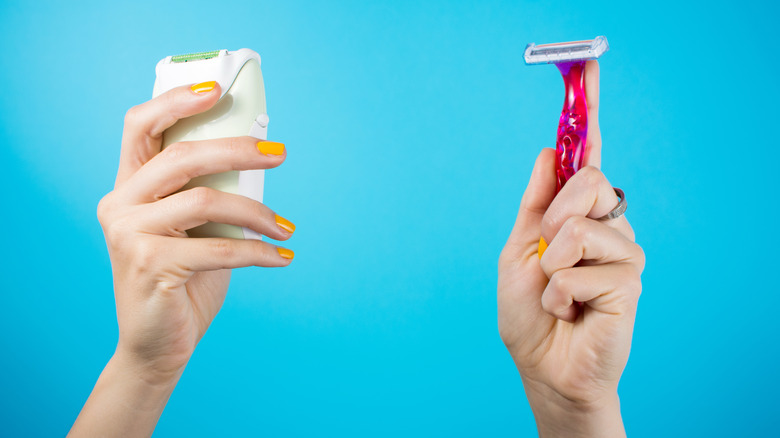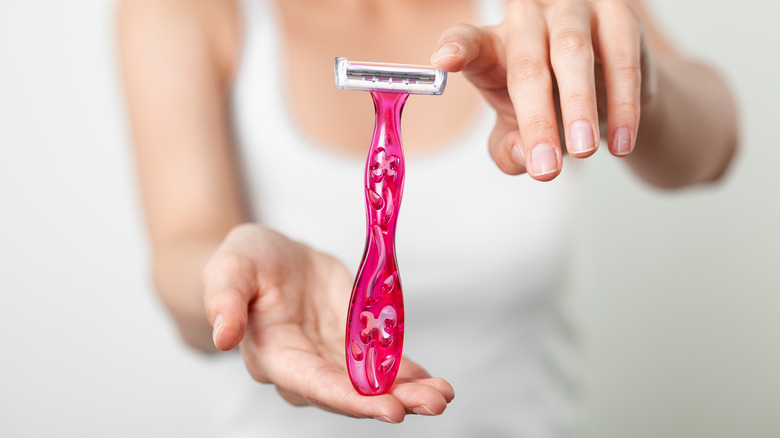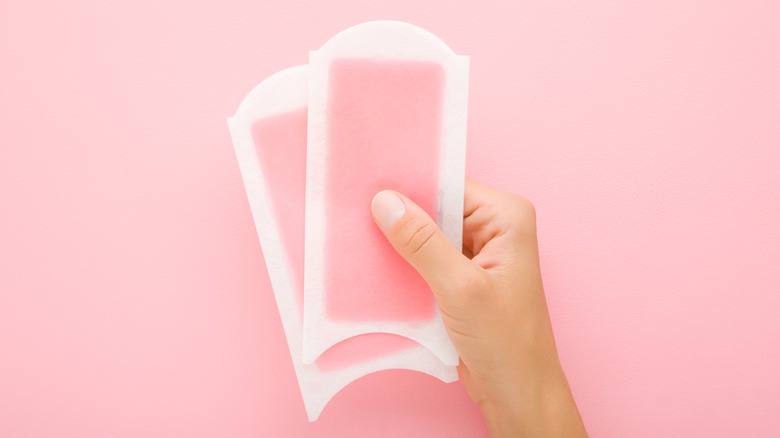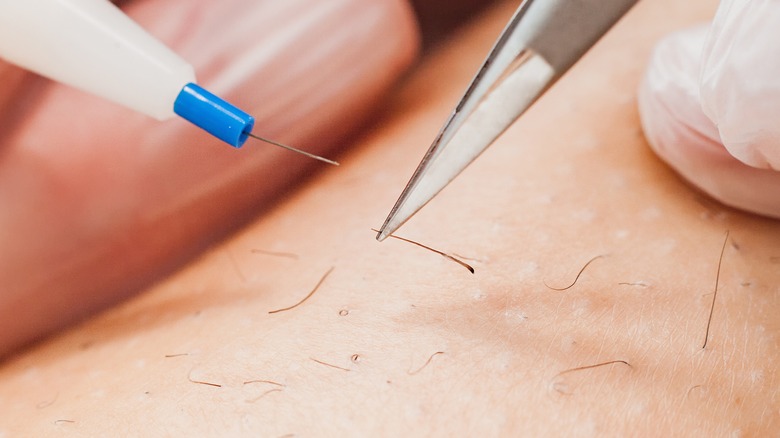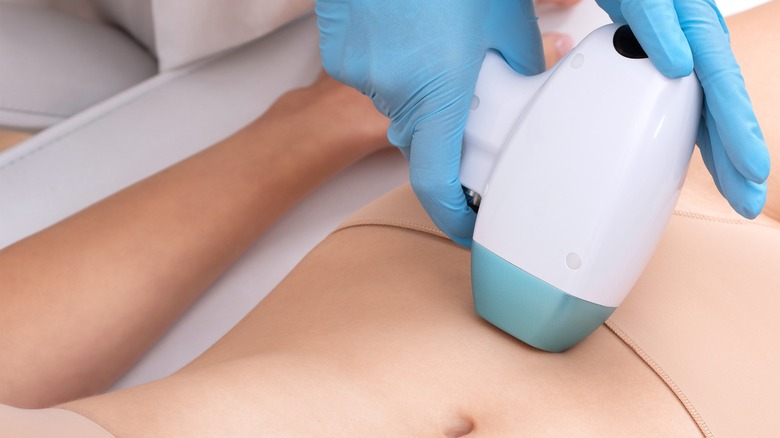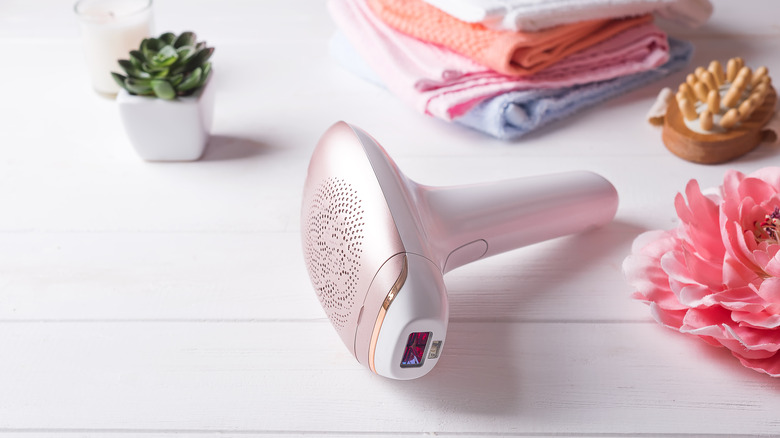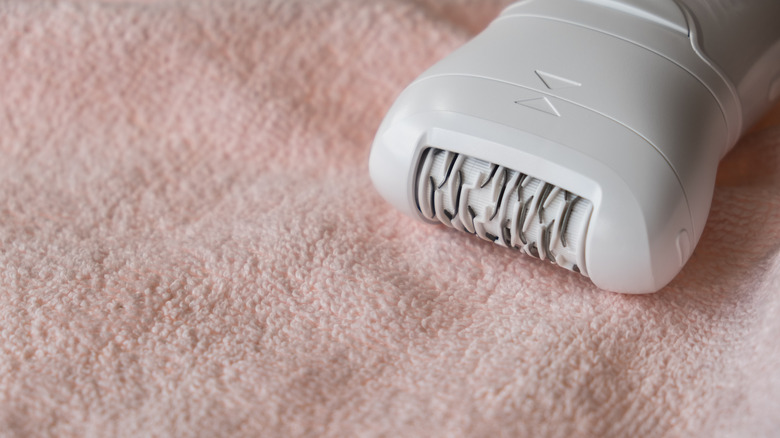The Best Methods To Remove Pesky Belly Hair
We may receive a commission on purchases made from links.
When you think about hair removal, what areas of the body come to mind? Some popular areas, such as the legs, underarms, and bikini area, are likely at the top of the list. But one common area for hair removal often gets overlooked — the belly. Having hair in this area is completely normal and natural, but some people prefer a smooth, hairless stomach.
Those who choose to remove body hair do it for many different reasons. Historically, hair removal preferences have varied widely from generation to generation. By the time the bikini took the world by storm in the 1960s, women began to feel the pressure to seek out hair removal.
In modern times, many of us still feel like removing belly hair is a requirement before donning a swimsuit or crop top. (Spoiler alert: it isn't.) But societal pressure or not, many simply prefer hair-free tummies. Luckily, there are many hair removal methods out there; however, it can be difficult to decide which is the best way to remove those stubborn hairs. Each method requires different amounts of time and financial investment, so no technique is going to be one size fits all. That's why we created this definitive guide to all of the best belly hair removal methods to help you make the best choice for your needs.
Shaving
If you're looking for a convenient way to remove belly hair at home, shaving is the first option most people turn to. According to a survey we conducted about hair removal preferences in 2022, about 72% of poll takers consider shaving to be their preferred hair removal method. For most people, this is because it's inexpensive compared to other hair removal methods, and because anyone can do it without professional help. And although it's considered very safe when performed correctly, there are some potential pitfalls to keep in mind before you bust out your trusty razor to remove belly fuzz.
For the best results, start out with clean, exfoliated skin. Next, make sure you're using a fairly new razor – replacing your disposable shaving blades weekly is necessary if you're a daily shaver. You'll also want to apply a high-quality shaving cream to the area to help the blades glide over your skin. Shaving with the grain of the hair rather than against it is often recommended, but this can be tricky when it comes to stomach hair that tends to grow in multiple directions. In this case, shave slowly and gently, taking great care not to tug hairs or nick the contours of your stomach. When finished, apply moisturizer on the area, and voilà!
When following the proper steps, shaving is an excellent option for getting rid of belly hair.
Waxing
Second only to shaving, according to our survey, waxing is an extremely popular way to remove unwanted hair. Many choose to wax because it offers a longer period of hairlessness than shaving but doesn't come with the hefty price tag of laser hair removal or other costly methods. But is it worth the pain?
If you have a high pain tolerance, well, you may have no problem sitting through a waxing session. But the pain level also depends greatly on the area being waxed. Areas with a higher concentration of sensory nerves, like the pubic area, will result in a more painful waxing experience. And while the upper belly area may not be quite as sensitive, the lower you go on the stomach, the more discomfort you are likely to feel while waxing.
For most people, the pain thankfully subsides quickly and makes the long-lasting results worth it. Most people report not needing to wax again for another three to six weeks. So while this isn't a permanent hair removal option, it can be perfect for those who don't want to deal with the daily hassle of shaving. DIY waxing is incredibly affordable, but even if you opt to have the hair waxed by a professional, it's still relatively inexpensive at approximately $30 to $35 per session.
Sugaring
Sugaring is an alternative to waxing that may be ideal if you have sensitive skin. This hair removal method gets its name from one of its ingredients: sugar. When combined with lemon and water and then heated, this recipe creates a sticky, candy-like paste that is cooled and applied to the skin. Then, just like waxing, the paste is quickly yanked away, taking the hair in the area with it.
But there are some key differences between sugaring and waxing. Sugaring is known to be gentler than waxing because it doesn't adhere as strongly to the skin, therefore causing less irritation. Additionally, sugaring can be more effective because it doesn't cause as much hair breakage as waxing. This is due to the fact that sugaring paste is yanked in the direction of the hair growth, unlike wax, which is pulled against the direction of hair growth.
Another great benefit of sugaring is that it is fairly inexpensive, with sessions generally costing about the same as a traditional waxing appointment. And although first-timers may feel more comfortable going to a professional for their first sugar wax, sugaring can easily be performed at home as well.
Electrolysis hair removal
Electro-huh? While the name may sound intimidating, there's no need to fear this hair removal method. In fact, electrolysis is the only fully permanent hair removal method that is approved by the FDA. Although you may have never considered using electricity to remove body hair, this might just be the perfect option to get rid of your belly hair for good.
Electrolysis works by inserting a tiny, electrically charged needle into an individual hair follicle. Once inserted, the electric current destroys the hair root and permanently prevents hair regrowth, according to the Cleveland Clinic. Since this process has to be repeated in every follicle within the area you wish to treat, electrolysis is generally only used to treat small areas of the body. So if you have a minimal amount of belly hair you'd like to have removed, like a happy trail, electrolysis may be the best method for you.
That being said, if you're looking for a quick hair removal method, you'll probably want to rule out electrolysis. To receive fully permanent results, most people require eight to 12 sessions, with a total treatment time of about 12 months. The average cost per electrolysis session is anywhere between $30 and $100, which adds up in the long run. But while this hair removal method is on the pricier end, electrolysis is the way to go if your goal is to have a completely hair-free belly for life.
Professional laser hair removal
Ever wonder how laser hair removal works? According to the Mayo Clinic, a machine emits a bright, highly concentrated light onto the treatment area. The light is absorbed by the melanin (or pigment) of the hair, which then heats up and causes damage to the hair follicle. This process removes the existing hair and inhibits future hair growth in that area. And while laser hair removal is very effective, there are some things to keep in mind before you book your first appointment.
Many people are afraid of laser hair removal because they've heard that it's painful. And while pain tolerance varies, many people agree that getting laser hair removal on the stomach area is only mildly uncomfortable. If you are concerned about pain during your procedure, you can always ask your provider to apply a numbing cream before beginning laser hair removal treatment.
It's also important to note that laser hair removal can be time-consuming and costly. To achieve the best results, most people will generally require six to eight sessions. And while it does stop hair growth for much longer than waxing or shaving, laser hair removal results are usually not permanent. If the hair grows back in the future, you may need additional sessions. And since sessions typically cost over $100 each, it gets expensive quickly.
Professional IPL hair removal
While the IPL (intense pulsed light) process works similarly to laser hair removal, it uses different technology. As its name implies, IPL uses pulses of light from multiple wavelengths to remove hair, unlike traditional laser hair removal, which emits concentrated light from a single wavelength, according to Medical News Today. IPL covers a larger surface area than laser, therefore cutting back on treatment time. While this may seem like a major benefit for those looking to remove abdominal hair, there are some things you'll want to consider before continuing with IPL.
People with darker hair and lighter skin are ideal candidates for IPL due to the fact that darker hair contains more melanin, which is what heats up when targeted by the IPL light and causes damage to the hair root. Additionally, those with darker skin may be more at risk for scarring and skin pigmentation changes. So, if you're someone with blonde or light red hair, or your skin color is darker than Fitzpatrick Skin Type III, you may need to consider another hair removal option.
IPL can also be more expensive than laser hair removal. The average cost of a single session of IPL is around $500, with most patients requiring three to four treatments. This may be appealing to people who want a shorter treatment time than laser hair removal, but it's best to consult with a professional to decide if IPL is right for you.
At-home IPL hair removal devices
The ability to remove hair at home is a game-changer for many people. Not having to call to schedule an appointment or battle traffic just to have your belly fuzz removed is a huge plus. That's why at-home IPL (intense pulsed light) hair removal devices have become so popular in recent years. But before you add one to the cart, consider the pros and cons of personal IPL devices.
The main downside is that these DIY devices may not be as effective as professional treatment. Even professional IPL hair removal isn't always completely permanent, and at-home devices may require more sessions to achieve complete hairlessness. For ideal results, it may be best to consult a professional. That being said, the cost of an at-home IPL hair removal device is generally far less than the total cost of professional treatment. Personal IPL devices typically cost around $200 to $500. In some places, you'll pay that much for a single session of professional IPL hair removal. After doing the math, many people are willing to take matters into their own hands with an at-home device rather than pay for a series of professional treatments.
Whether you try IPL at home or go with a pro, be sure to follow proper aftercare procedures. After any kind of laser hair removal or IPL treatment, use a cool compress, avoid sun exposure on the treated area, and take acetaminophen (Tylenol) if you experience any post-treatment discomfort.
Depilatory cream
If you're looking for an easy, at-home hair removal method, depilatory cream may be your new best friend. This method provides results that are similar to shaving, with results lasting up to three days on average.
Depilatory creams work by using thioglycolic acid to break down the keratin within your hair. This weakens the hair enough that it can simply be wiped away with the cream after a few minutes. But for safety reasons, it's important to follow the exact directions of the product being used. If the cream is left on too long, you risk sustaining a chemical burn in the area being treated. But when used correctly, depilatory creams are proven to be safe and effective for hair removal.
Users should also be warned that depilatory creams are known to give off a pretty foul odor. This is caused by the reaction between your hair and the chemicals within the cream, but the smell shouldn't linger for long after everything is washed away. Despite the smell, not having to worry about razor bumps or nicks makes using depilatory creams a no-brainer for many people.
Epilator
An epilator is a hair removal device that you can use from the comfort of your own home. This handheld machine uses rotating discs that act as tweezers, pulling hairs out at the root as you glide it across your skin. This gives similar results to waxing, with effects lasting about a month.
While epilation can be painful, many people consider it worth enduring. Epilating allows you to go longer between hair removal sessions and doesn't involve the mess and clean-up that waxing does. Epilation devices are also far more affordable than at-home IPL devices, making them an ideal DIY hair removal option. You can also find a decent epilator for under $50.
Despite all of the benefits of epilating, though, the thought of putting yourself through that kind of pain may still be a deterrent for you. But if it's any consolation, the more frequently you use epilators, the less painful the process becomes. So if long-lasting hair removal sounds like something that you could stomach the pain for, epilation could be the belly hair removal option for you.
